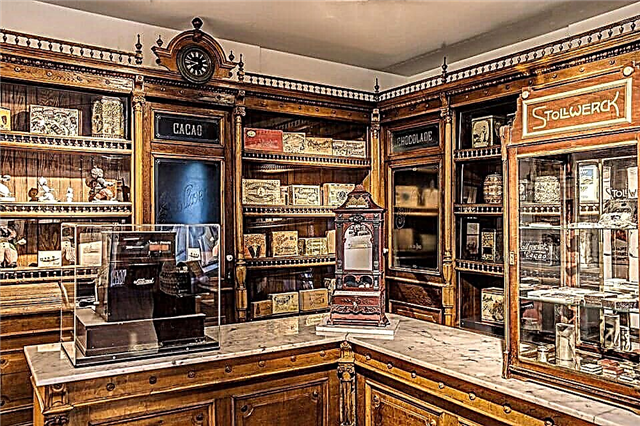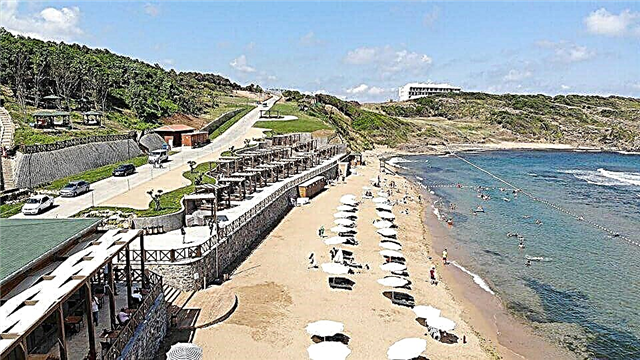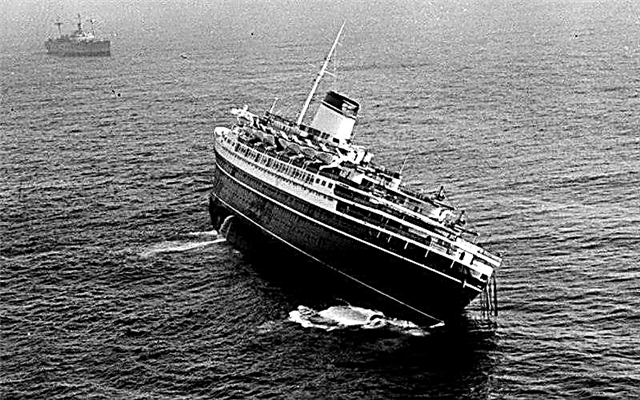Sunken ships can tell a lot about the era when they sailed the seas and oceans. However, each of them survived the tragic death of those who were on board at a fateful moment. Until now, sunken ships keep their secrets under the water column. Any more or less prepared diver can try to solve the mysteries of ghost ships today. However, not every scuba diving enthusiast will be able to get inside the ship. Modern equipment and special training will help to solve this problem too. Therefore, today everyone who wants to touch the underwater secrets of sunken ships can afford it as an interesting tourist entertainment.

Warship Sirius
The warship "Sirius" was sent on a combat voyage in 1797. This forty-meter frigate has repeatedly participated in sea battles and in most cases won a victory over the enemy. However, in an unequal battle that broke out at the end of August in 1810 between the British and French fleets, the frigate hit the coral reefs. Undefeated until that time, "Sirius", having received a hole, became vulnerable, and the French ships, one after another, fired from their guns at the British frigate until they sent it to the bottom. The ship is still at a depth of about 25 m. Of course, for such a long time, many marine inhabitants have lived in it. But to this day, off the southeastern coast of the island of Mauritius, you can see the hull of the frigate and the traces of the last battle of the "Sirius" - guns and other guns torn apart by shells, lying at the bottom around the ship.
Ferry Zenobia
The death of the huge ferry "Zenobia" can be called unique not only because not a single crew member was injured during its crash, and everyone was safely rescued. The fact is that the ferry was built and launched in 1979, and during its maiden voyage it sank on the fourth day. The reason for the death of the ferry was never finally established. There have been speculations about malfunctions in the ferry's computer system, as well as deliberate drowning in order to obtain insurance. Each of the versions has the right to exist. After all, about 100 trucks and cargo worth about 200 million USD went to the seabed off the coast of Cyprus together with the ferry.

As a result of the slow sinking of the 172-meter ferry, many of the premises survived. However, not every diver can get to the engine room or restaurant. Due to the fact that the left side of the ferry gave a list during the sinking, it found itself at a depth of 42 meters, and the starboard side sank to the mark of 18 meters. It is worth noting that the water off the coast of Cyprus is remarkable for its amazing transparency. Therefore, "Zenobia" is clearly visible from a height if you fly up by plane to Larnaca.
132-meter "Fujikawa Maru"
The ship graveyard off the coast of Micronesia near Truk Island was formed during the Second World War. During the military operation "Hilton" in 1944, American fighters managed to defeat the Japanese sea and air fleet. For many decades, military equipment buried on the seabed attracted almost no one, until in the 70s the scientific expedition of Jacques Cousteau began to study it. Since then, divers from all over the world have been rushing to see the sunken submarines, planes, ships and tanks of Japan during the Second World War.
Laguna Truk, at the bottom of which there is a cemetery of Japanese military equipment, is surrounded on all sides by corals that protect the equipment from ocean currents. Therefore, the buried submarines, ships and aircraft are well preserved. In addition, some ships met their death on the shallows. These include the 132-meter "Fujikawa Maru", to which any diver can descend to a depth of 9 meters. In addition to the sunken grandiose military equipment, diving enthusiasts may be interested in the amazing corals and bright tropical fish that have firmly settled here, among which reef sharks can also be found.

Orkney Islands Ship Graveyard
Another huge cemetery of ships is the site of the forced sinking of ships of the German navy during the First World War. These wrecks are located off the coast of northern Scotland at Scapa Flow in the Orkney Islands. Forcibly detained off the coast of Britain, the German fleet was destroyed by order of its own command. German Admiral Reuters brilliantly planned an operation to destroy 50 warships in just a few hours, so that after the surrender of Germany they would not fall to the enemy.
At the bottom of the British harbor, about 70 different ships found their last resting place, among which there are not only German ships, but also unidentified and unexplored ships. Therefore, there is a great opportunity to become the discoverer of unknown sea vessels.

Steamer "Baron Gauch"
During the First World War off the coast of Croatia, the completely peaceful steamship Baron Gauch was also damaged. After launching in 1908, after some time he began to be repaired. During the war years, the steamer was first used to deliver food to the city of Kotor, and then to evacuate the civilian population from the war zone. One day in August 1914, the Baron Gauch was blown up by a mine. It is not easy to explore this ship these days. Divers require a special permit to dive.

Liner Andrea Doria
Sank on the way to New York at a depth of 75 m, the liner Andrea Doria was the first international class passenger ship built after the Second World War. Not far from the American coast, at zero visibility, a Swedish ship heading for Europe crashed into the Doria. The captain of the sinking liner did his best to save the passengers and crew. Four nearby ships came to Doria's aid. Despite the fact that there were 1134 passengers and 572 crew members on board, almost everyone was saved. Only 43 passengers were killed in the collision of ships. Andrea Doria is considered the most inaccessible for divers due to its distance from the coast, low water temperature and great depth.

Titanic
Everyone knows the story of the tragic death of the Titanic. Every diver dreams of diving into the depths of the ocean to see the legendary ship with his own eyes. However, not everyone can decide on such a desperate step. After all, the depth at which the Titanic rests is 3750 m. However, thanks to the achievements of science, even this depth can be conquered. To dive to such an impressive depth, they use a special underwater vehicle - the Mir bathyscaphe. It can accommodate only three people, including the aircraft pilot. It should be noted that the pleasure is quite expensive and not everyone can afford it.











